How to Visit Uzbekistan, One of the Hottest Destinations in the World
Plus, Anthony Bourdain ruining men’s dining, Rio cracking down on beach vendors, Eurostar wifi, a very cool new London museum, Wayfarer Chapel’s future, and more!
Stepping past the ticket desk and clambering up smooth stone stairs to pass through an archway, I was confronted with the biggest mistake I’d made traveling in a long time. Standing before me was an avenue of the most staggeringly beautiful mausoleums I’d ever seen … and a teeming horde of tourists. This, I realized, is where I should have gone first thing that morning. Few are up early here, especially not group tours which take forever to wrangle. And even though the crowd thinned somewhat as we took our time wandering amongst these wonders, it was with great bitterness that I accepted this was my sole shot at exploring the necropolis of Shah-i-Zinda.
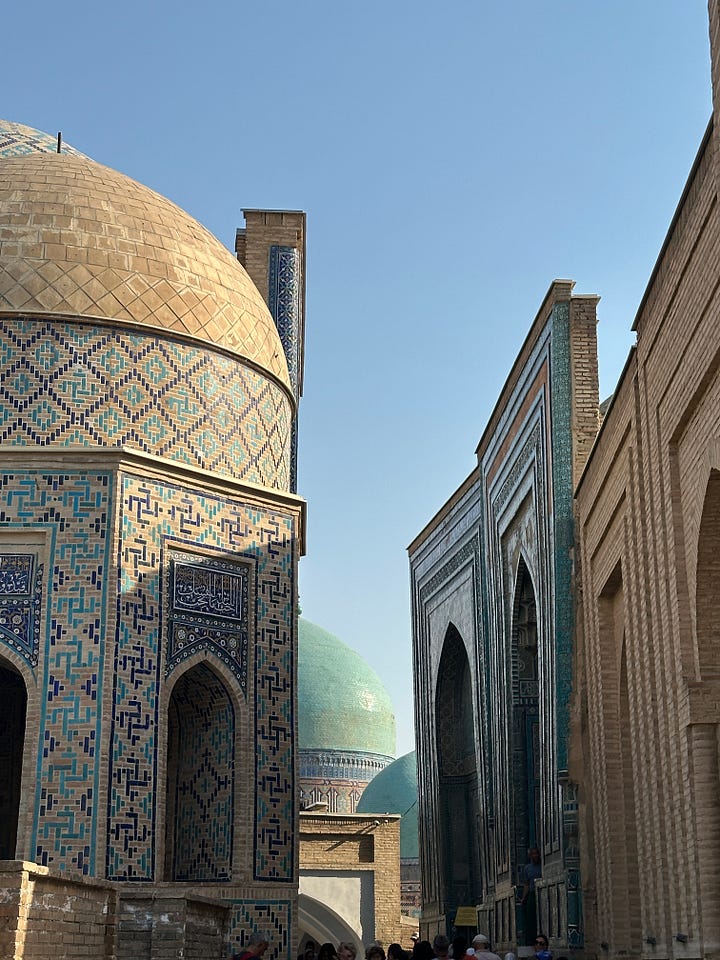
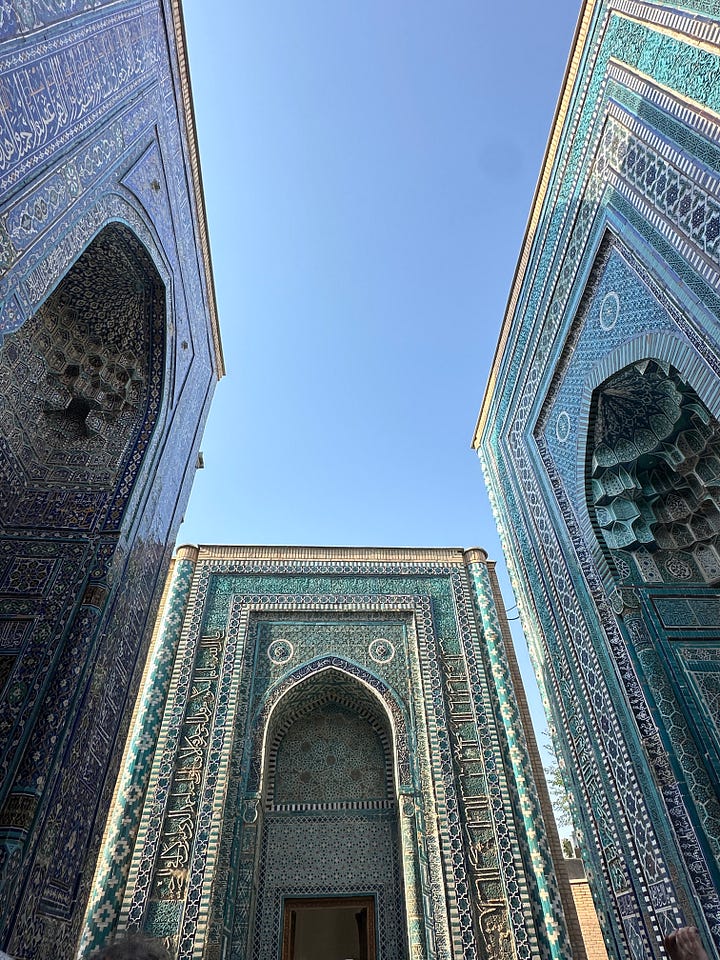
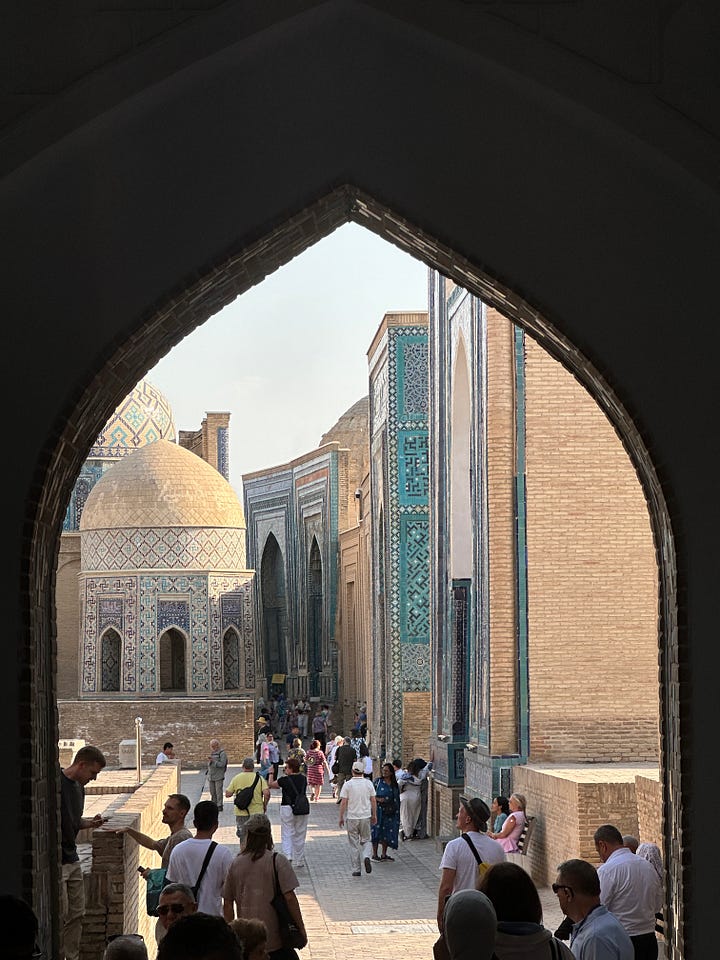
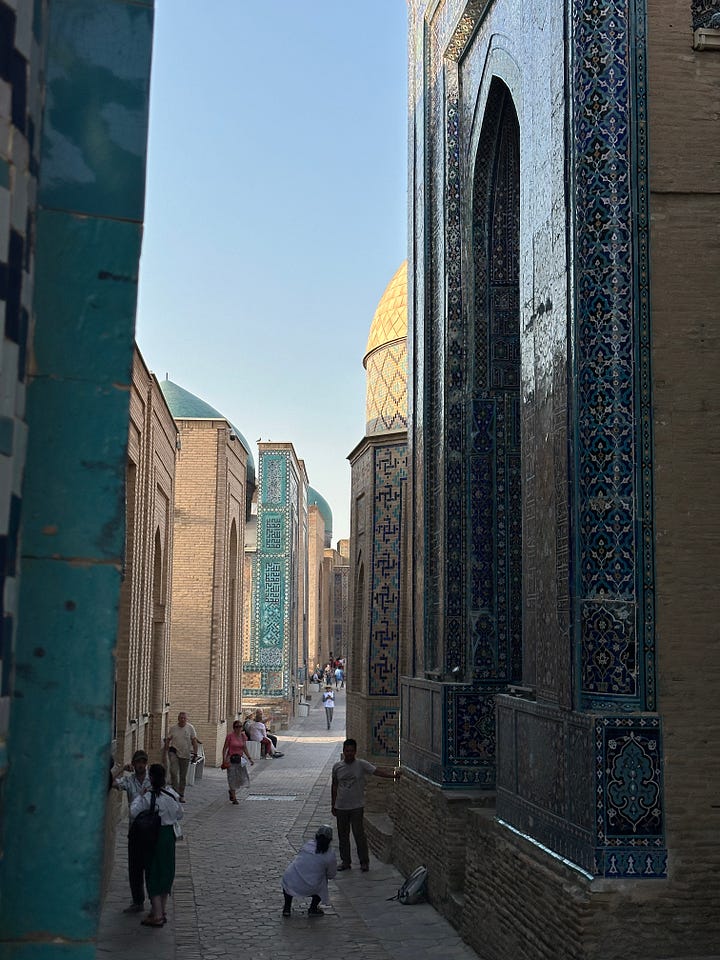
It was one of many “mistakes” I made on a recent trip to Uzbekistan, the former Soviet country that hosts the once-great cities of the Silk Road. Lessons I hope you can use when you visit this storied place.
This double-landlocked Central Asian country had long been a spot on the map that beckoned me. I’ve called off three trips over the last decade. And with each failed attempt, it’s only grown in popularity. In 2024 alone, tourism increased 50 percent from the year before.
In May, I finally went, doing a horseshoe-shaped route around the country from Tashkent to Nukus to Khiva to Bukhara and ending in Samarkand. It was a trip whose highlights included the over-the-top metro stations of the capital, a hoard of avant-garde art spirited away to the desert from Stalin’s clutches, palaces of khans, ornate madrasas and mosques, and one avenue of mausoleums that made the entire trip worth it. Unwittingly, it was also a sequence that ensured each city I went to was more impressive than the last.
We have a tendency, a crutch some might say, in travel writing to constantly compare places. It’s the Williamsburg of Berlin or the Montmartre of Rio or the Upper East Side of Madrid. Croatia is the new Portugal. Zipolite the new Tulum. And so on.
So you’ll have to forgive me when I say that Uzbekistan is a lot like visiting Egypt—and I mean that in all the positive and negative ways.
Like Egypt, the sights will leave you gobsmacked. The madrasas, mosques, mausoleums, and palaces of Khiva, Bukhara, and Samarkand—once centers of great kingdoms cobbled together into a country along with Tashkent by the Soviets—are some of the greatest feats of human art and architecture I’ve ever seen.
But, similar to Egypt, the sights are the sights. Everybody, regardless of station, is seeing the same stuff. There is little reward to 99% of travelers for venturing beyond the main places in these cities in search of some authenticity. The worst combinations of communism and post-communist capitalism have wreaked their havoc. “Hidden gems” are not what you want to be chasing. At least not yet. (That said, there are outfitters that specialize in tours that get you outside the conveyor belt of tourist Uzbekistan and take you into the mountains, etc.)
Nearly everybody I interacted with in Uzbekistan was so lovely and hospitable, but like Egypt it’s a sort of weird trip in that the reason you’re there has little to do with the people currently living there. And as you navigate stall after stall of cheap trinkets and tchotchkes it often feels like tourists are there despite them.
Like so many up-and-coming destinations, flying into Uzbekistan often involves arriving or departing at ungodly hours. That was certainly the case when I landed in Tashkent after connecting in Istanbul. Relieved to have managed to sort out the e-visa (the website rejects nearly any photo you submit unless you pay a third party to photoshop yours. I used visafotos.com), my first hurdle was getting from the airport to the hotel.
Yandex, the Russian version of Uber or Lyft is the ridesharing app available here and it works great. But you need a decent internet connection to set it up, and basically, you can’t connect to any of the public wi-fi in Uzbekistan without an Uzbek number. (Wells Fargo’s security check system almost gave me an aneurysm.) In general, I’d go to Uzbekistan with multiple physical credit cards and also have them set up on Apple Pay. I can’t count the number of times I had to try each card on a payment machine only to have the exact same card work but on Apple Pay. Or vice versa.
“It’s Uzbekistan!” was the sole rejoinder I’d get when I, petrified to think somebody might believe I wasn’t good for it, insisted that the cards were fine to the nonplussed employee.

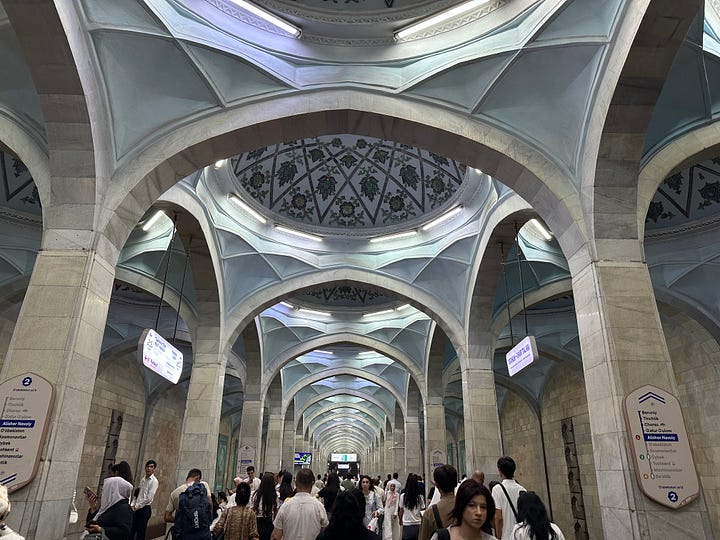
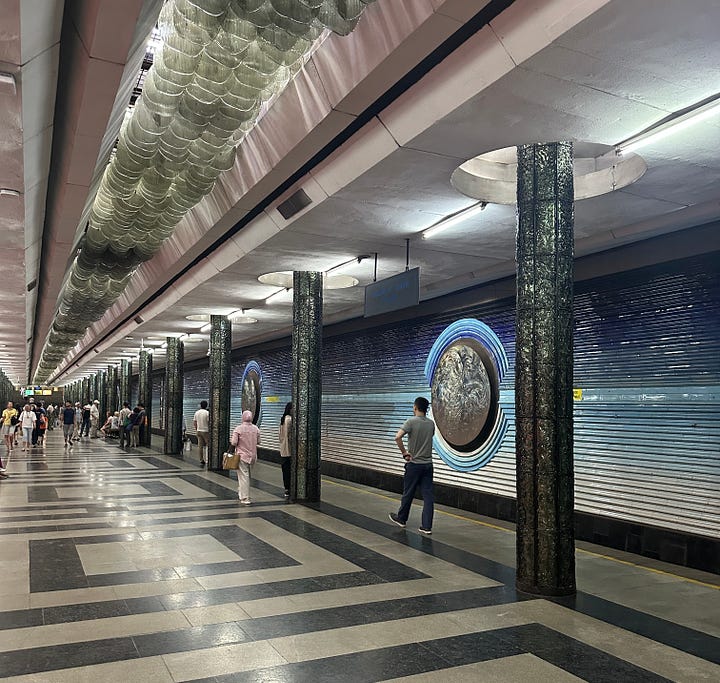
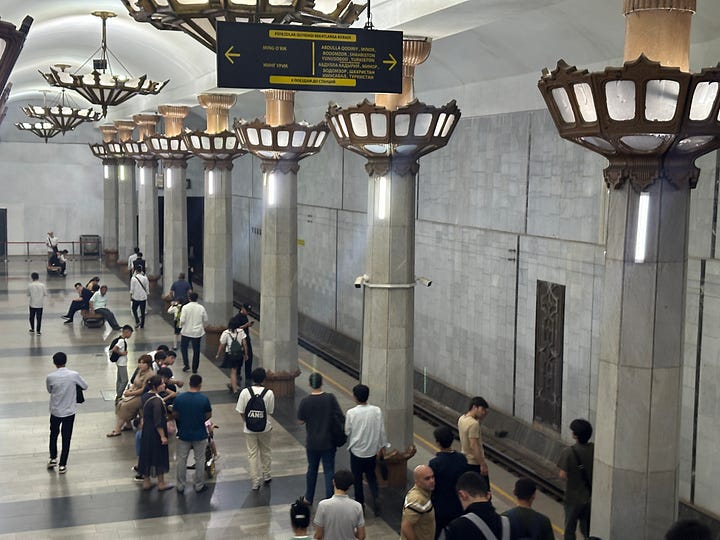
Once one of the great Silk Road cities, Tashkent was wrecked by an earthquake in 1966, after which it received the painful present of being rebuilt by the Soviets. As such, it is all massive boulevards and eclectic socialist architecture. While there are a few historical sights—Hazrati Imam complex for one—the main draw here is the Soviet architecture. There are informative tours focused on these works, but one of the most fun things we did the entire trip was to just cruise around on the Moscow-emulating metro system with its over-the-top stations. One note for doing this—if you’ve prepped the list of stops you want to see, the platforms at stations with multiple lines aren’t all decorated the same, so make sure to check each platform.
Out of all the bazaar experiences in the country, I enjoyed Chor Bazaar in Tashkent the most as it was the most expansive and lively. It felt the most like stumbling into a bona fide market in use by the city’s citizens.
After a couple of misses food-wise in Tashkent, I remembered a bit of advice from a Reuters correspondent I’d been given while visiting Kyiv years ago. When in the former Soviet Union and in doubt, go to a Georgian restaurant. Sage advice that holds up, as likely the most solid meal we had was at Pro.Khinkali.
The plan for the rest of the trip was ambitious but theoretically sound. Fly Uzbekistan Airways early the next morning to Nukus which is home to the Savitsky Museum from which we’d be picked up and driven three-ish hours to Khiva to the south. This would be followed by Bukhara and Samarkand. Folks typically visit Nukus, a city devastated by the desertification of northwestern Uzbekistan for the Savitsky and as a launching point to get to what remains of the Aral Sea and the iconic vistas of boat skeletons rusting in the desert. We decided to forgo the Aral Sea. Visiting seemed like watching a movie whose lesson is obvious and was solely going to depress me. Plus it would have added multiple hours more of driving on rough roads.
Uzbekistan has rightfully made much of its modernity. It has high-speed rail, good cell service, luxurious knock-off Chinese cars for ride shares, and so on. But there are still plenty of moments that make the trip challenging. After waking at 5 to catch a 7 a.m. flight, we arrived at the airport to a flight board without our flight. No check-in desk had Nukus on the screen either. We scurried over to one, and waited in line, only to get a perfunctory, “It has been delayed four hours. It will depart at 11.” Nothing more was offered until we got an email around 8 a.m. letting us know urgently about our delayed 7 a.m. flight.
We all have places or things we’re obsessed with getting to, and the Savitsky Museum (formally named the State Museum of Arts of the Republic of Karakalpakstan) was that for me. I’d been told about it by a woman I did CrossFit with who I am convinced was CIA (she worked on democracy promotion for USAID in the former Soviet world), was super cool, and smoked me in workouts despite being a couple of decades older. For the unfamiliar, it's the second-largest collection of Russian avant-garde art in the world thanks to the devious and assiduous work of one man—Igor Savitsky. For years he outfoxed and outlasted Soviet officials after Stalin purged art that did not conform with his Social Realism dictates. Savitsky managed to save thousands of works by artists who were exiled, sent to gulags, or outright executed. The collection is astounding, especially where it examines the meeting of the Russian avant-garde with the Islamic art forms of Central Asia. There are works by Kandinsky, Volkov, Kurzin, and Lysenko.
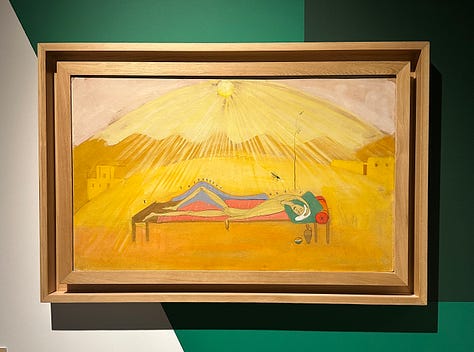

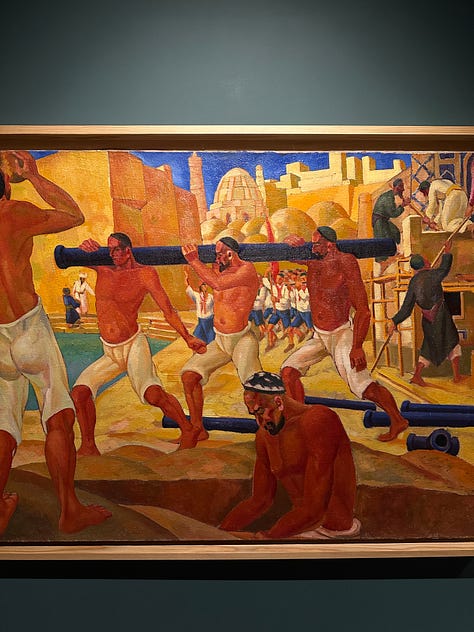
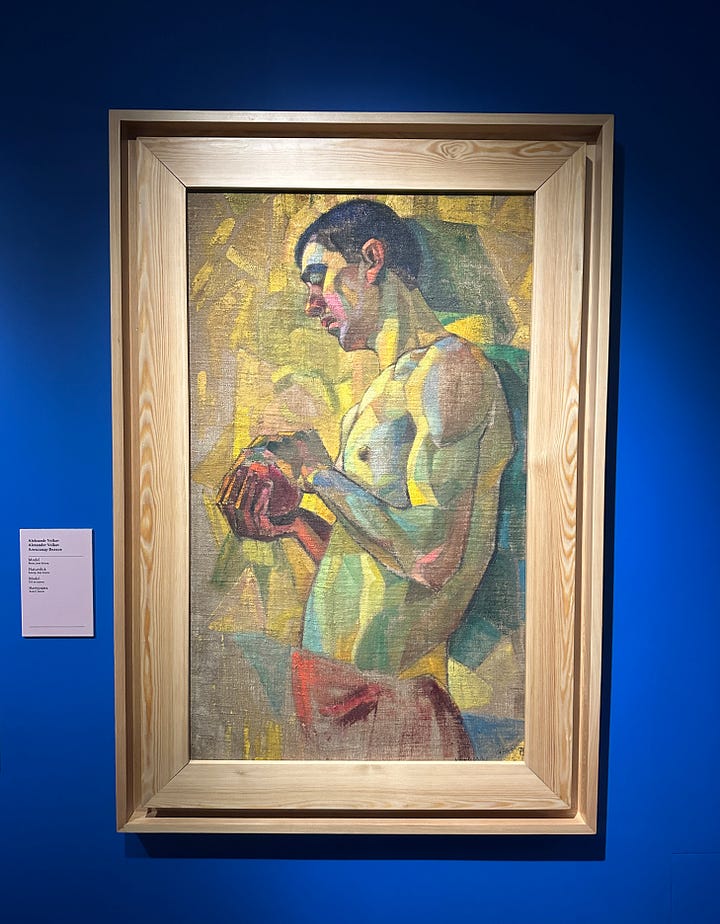
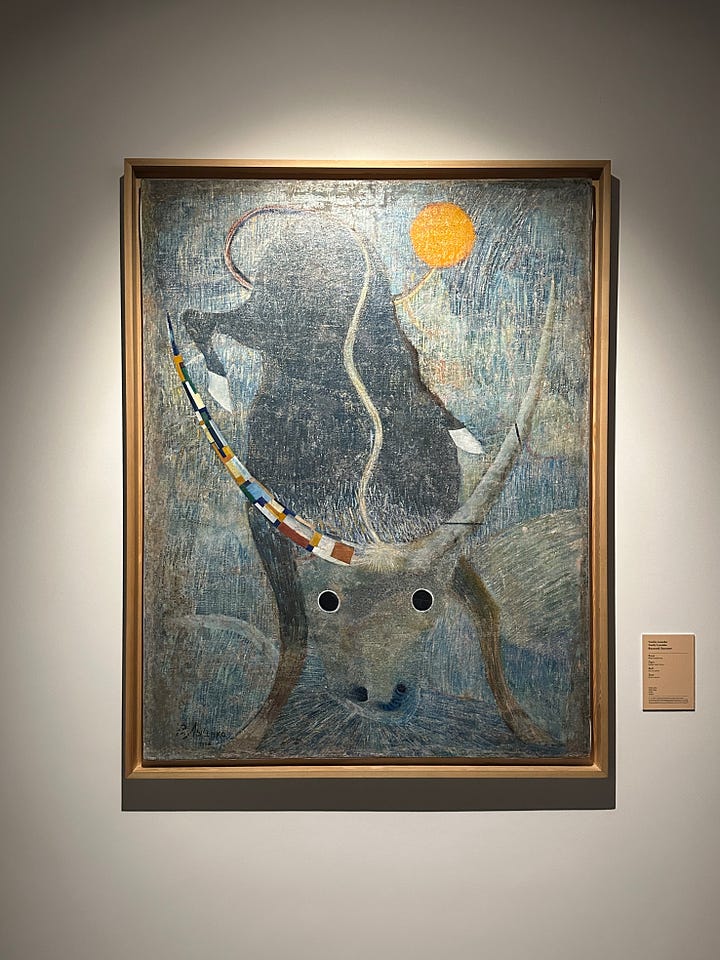
Yevgeny Lysenko's The Bull (terribly, terribly lit) is probably the most famous piece in this isolated collection that would leave dealers salivating. The work was immediately censored by Stalin and his regime because "bulls cannot be blue." Savitsky got a hold of it and played Soviet authorities when they visited by displaying it as "Fascism Advances" so they might think it was anti-Nazi.
Also of note are works by Aleksandr Nikolayev. One of many artists sent to the far reaches of the new Soviet Union under artistic programs created by Lenin, he fell in love with the region. Also known as Usto Mumin, he painted many overtly homosexual works. His most notorious piece depicted what is essentially a gay wedding in 1923: Zeal with Pomegranate. Now in the State Museum of Oriental Art in Moscow, it's a sequence of two bacha dancers of the same age falling in love, marrying, being shamed, and dying.
The moment you’ve decided to go to Uzbekistan, book as much as you can. It’s a tourist scene dominated by group tour operators who buy up hotel rooms and train tickets as soon as they become available. This left me unable to experience the Afrosiyob high-speed train and with few options when it came to hotels. Khiva, the smallest of the major destinations, often gets left out because of its relative remoteness (you must fly, or connect to Bukhara via a seven-hour ride in a Soviet-era train or a brutal six-hour car ride on often pothole-ridden roads). So the hotel options are not as extensive as other cities and your best bet is to use Booking.com. I found the madrasa-turned-inn we stayed at, Madrasa Polvon Qori, one of the most charming places I’ve lucked into. Our tiny but efficient room gave a true taste of what centuries of travelers and students would have experienced in madrasas and caravanserai just like this. And the breakfast was genuinely divine, with impressive crepes, delicious seasonal fruits, and the only almonds I’ve ever relished.
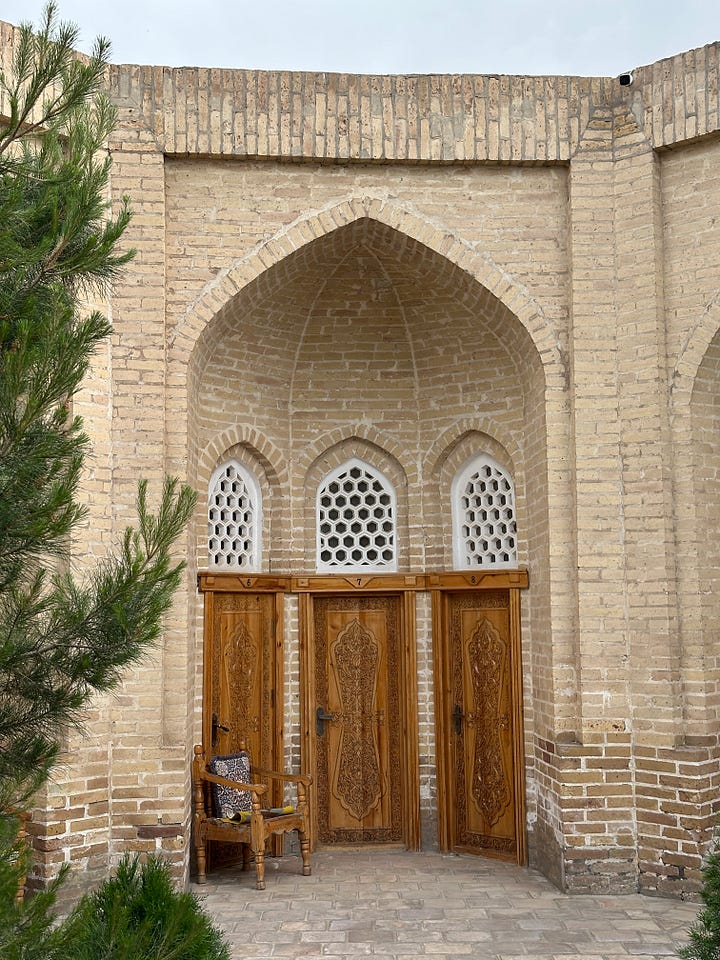
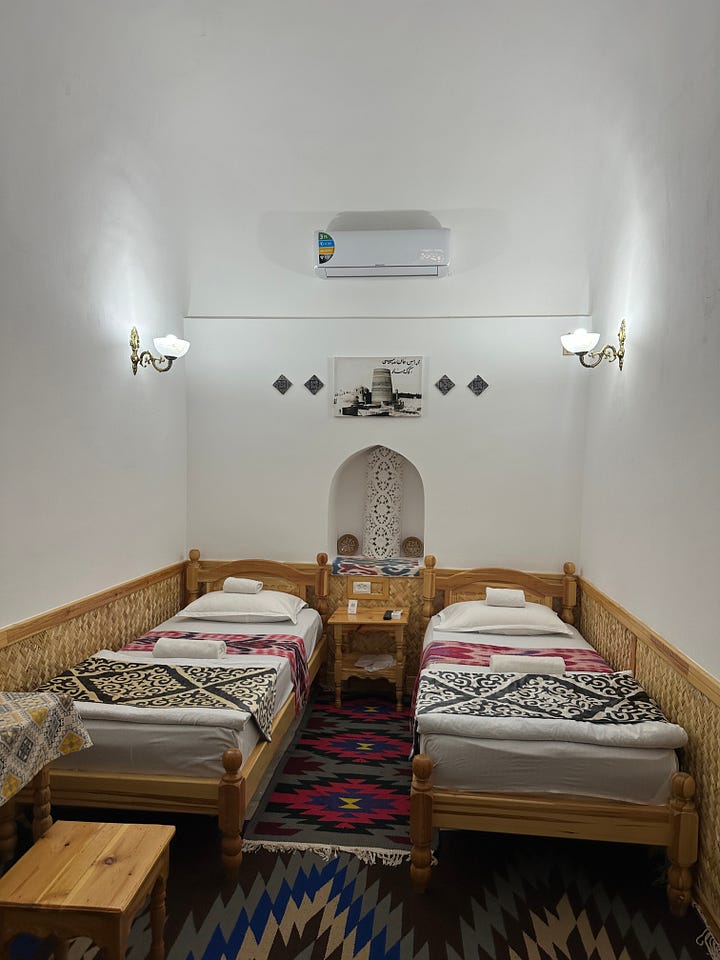
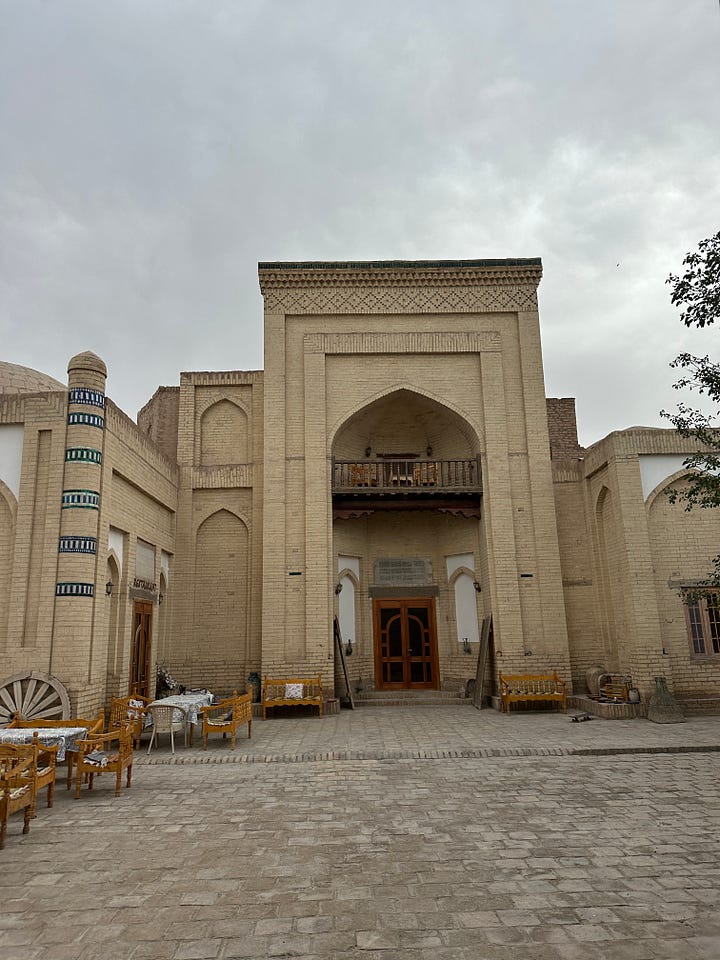

The once-mythical city of Khiva was the last khanate in the region to fall to Tsarist Russia. In The Great Game, a must-read that chronicles England and Russia racing to gain footholds in Central Asia in the 19th century, it is Khiva’s slave market that once drove fear into the hearts of many and countless Russians and British adventurers. In the villages and unforgiving lands surrounding its thick walls, thousands of Russian troops perished. Once inside, navigating the whims of the mercurial khans was just as perilous. But this compact city should be on your itinerary. Out of all the former palaces we toured, the two here—Kuhna Ark and Toshhovli Palace—were the most interesting, especially the Toshhovli.
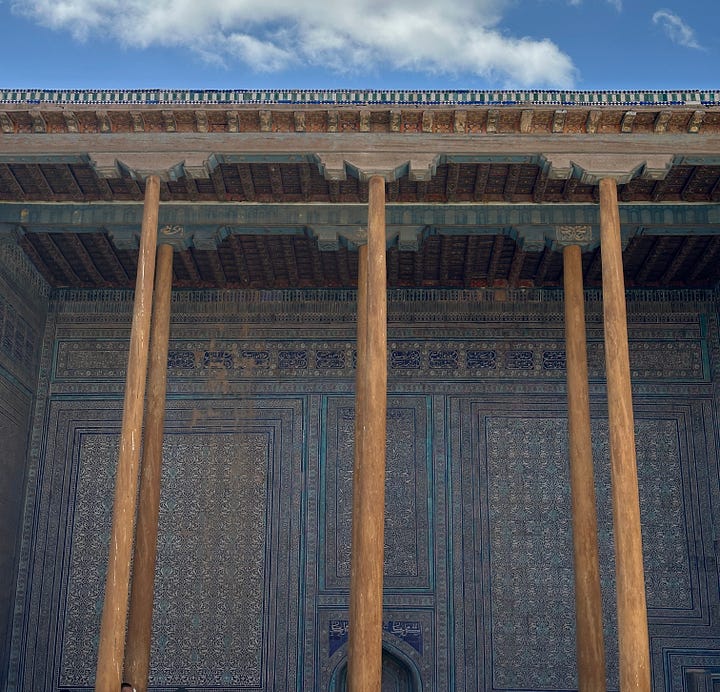
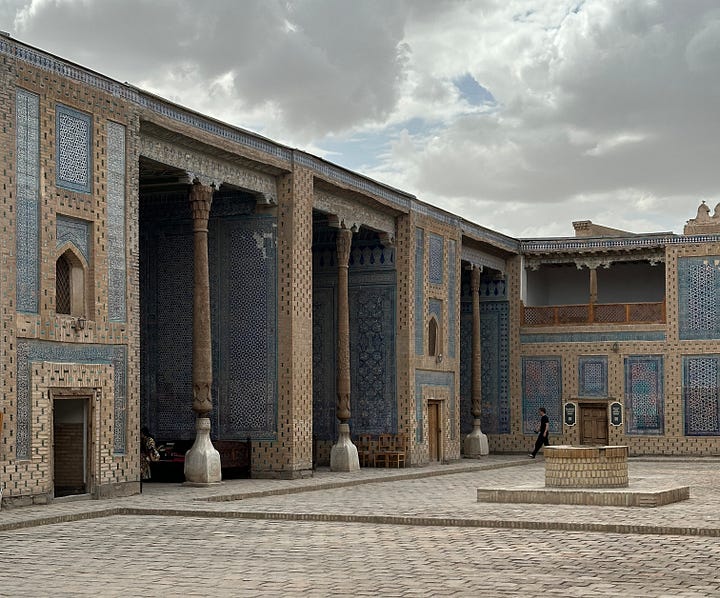
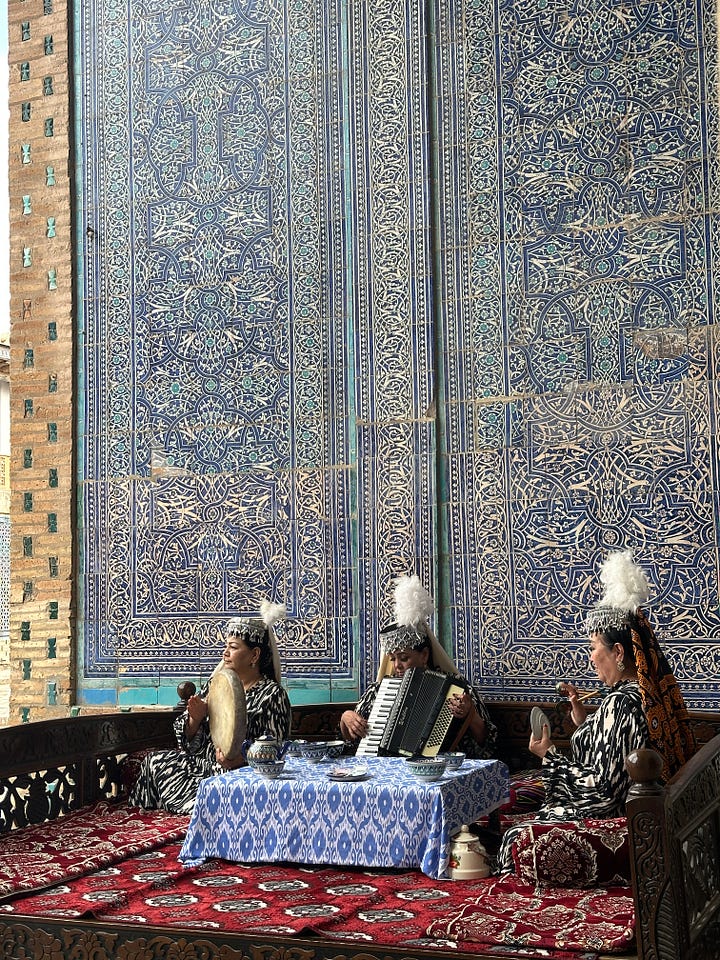
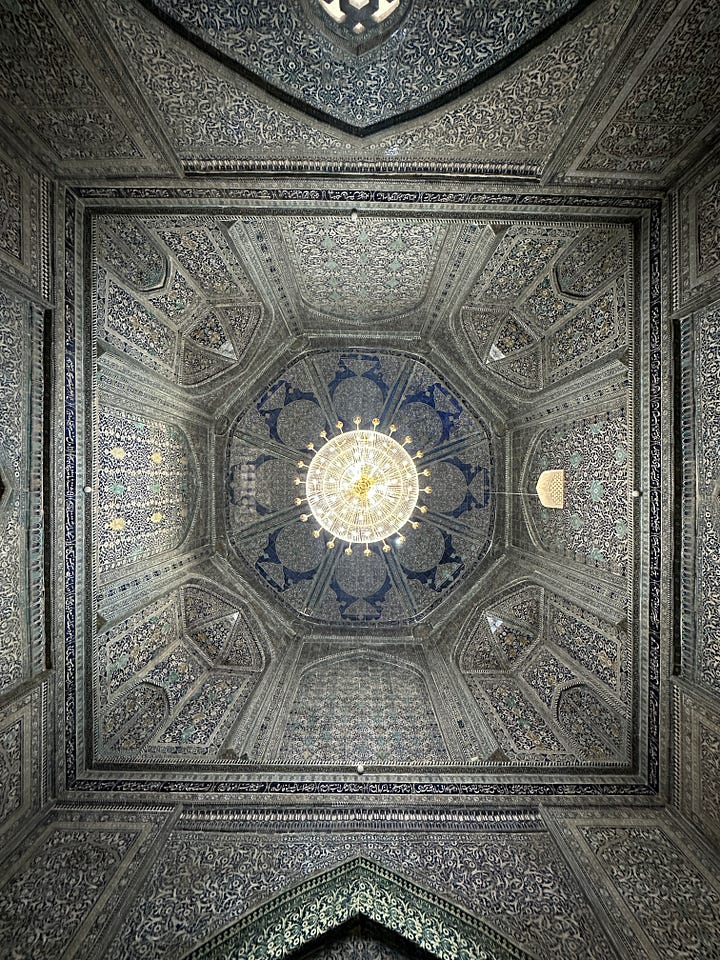
During the daytime, this mud-colored city is one giant Disneyland-ish open-air museum (you have to buy a ticket to enter it). Get past the ick of that and hit all the sights, especially the resplendent-in-tile Pahlavon Mahmud Mausoleum, which will bowl you over since you haven’t seen any of what will come in Bukhara and Samarkand.
Few things here are authentic by any measure of that oft-meaningless word, so instead find moments that are beautiful, enjoyable, or just interesting.
There is also the textile museum, made famous by the best-selling memoir A Carpet Ride to Khiva: Seven Years on the Silk Road. I must admit that I found myself drained of all enthusiasm for textiles here. I was constantly reminded of that moment in Sex and the City’s “Escape from New York” episode where Samantha sees all the knock-offs in a trunk. Like Samantha, the sheer number of knock-offs or potential knock-offs took a toll. Someday I’d love to read an interesting essay on the economics and best business practices of trinket-sellers. What are the margins? Does displaying so many all at once in a way that makes stuff look cheap and mass-produced work as a sales tactic?

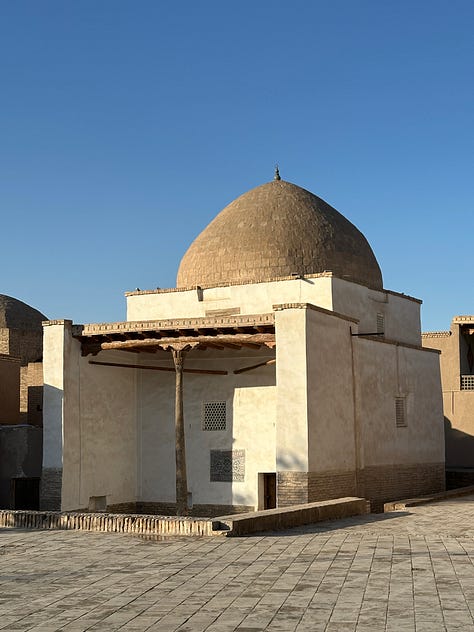
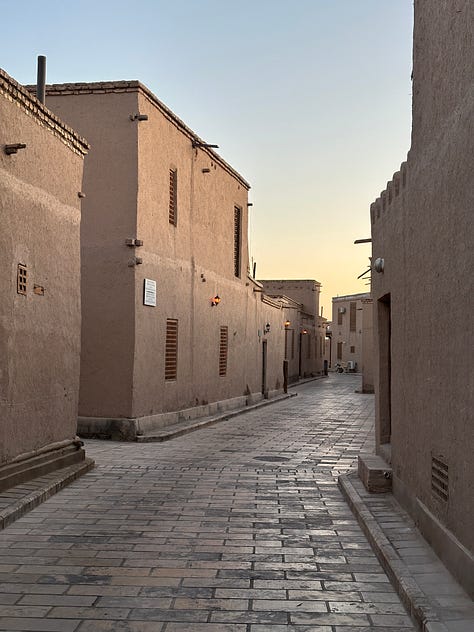
The real unalloyed joy comes, though, in getting up at the crack of dawn to wander this town’s nearly empty streets. All the stands have been packed away and boarded up, the only locals moving this early are the observant men coming and going from the first call to prayer. It’s far more transportive, the intrusions of modern life fewer. The morning desert light is immaculate, casting in the span of minutes a warm or cold light on these historic works. So arresting is this light—especially around the mausoleum and the fat green Kalta Minor Minaret—that photographers are the only Westerners likely to spoil the scene.
From Khiva to Bukhara, its one-time rival kingdom, you have two options. You can take the Soviet-era sleeper train or hire a driver. The first and second-class tickets on the train were all booked up by the time I looked, and my friend wasn’t keen on seven hours in a four-bed third-class cabin with the possibility of no air conditioning. So we hired a driver for $80 instead. While unpleasant—the aforementioned potholes combined with no seat belts, a driver perpetually trying to reply to people on Whatsapp, and a driving style best described as perpetual hurtling—it was over in roughly six hours.
Of the five cities I went to in Uzbekistan, Bukhara was by far my favorite in terms of the actual city experience. While the Soviets mauled it—few of the dozens of elegant pools and canals found throughout the city remain—what remains of the city is lovely, especially its elegant trading domes. It was also the most “lived in” of the historic centers, and at night would come alive with tourists and citizens alike.

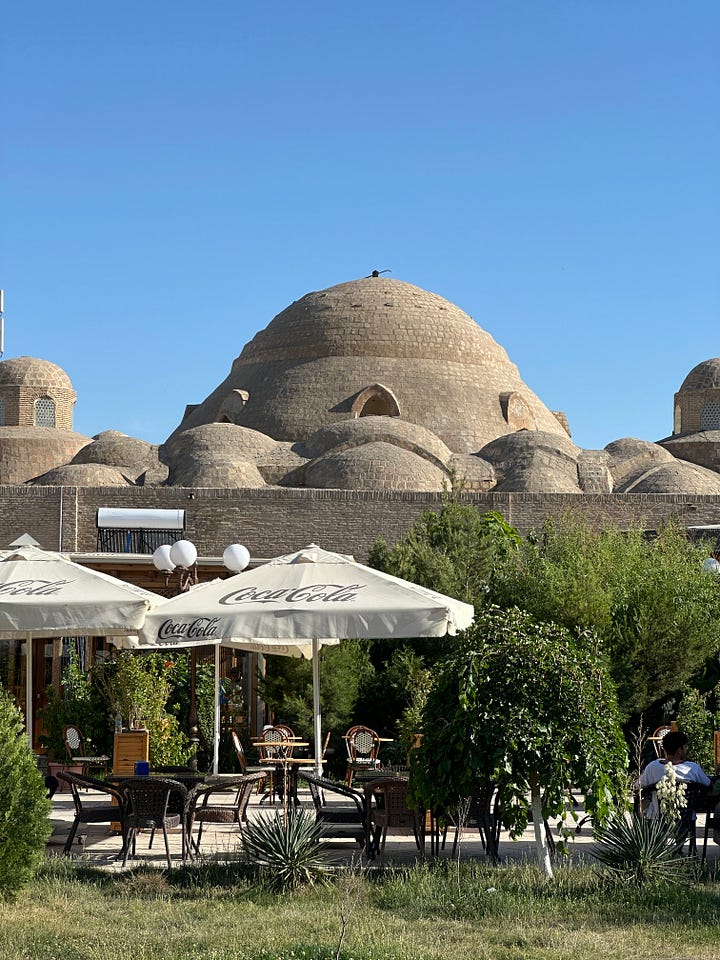
Our two days in Samarkand were split between exploring on our own and with a guide. With our guide, a portly and amiable fellow we constantly worried was going to pass out in the extreme heat, we visited the unforgettable Ismail Samani Mausoleum, Bolo Haouz Mosque, the (forgettable) Ark, the overrated emir’s summer palace, and the majestic Po-i-Kalyan complex.
Made up of the 16th-century Kalan Mosque, the 12th-century Kalan Minaret, and the Mir-i-Arab Madrasa, this complex was borderline stupefying. The minaret is a behemoth, and its impregnability and size are said to have been part of what saved it from Genghis Khan’s razing of Bukhara. The legend goes that to fully look at the tower, Genghis had to lean so far back that his cap fell off. In going down to pick it up, he realized he’d done something he vowed never to do—bow—and so spared it. The mosque is one of the largest in Central Asia and sufficiently impressive and even though the facade of the madrasa is covered in scaffolding, the elaborateness of its tilework is a marvel.
I found, however, the pink and gold muqarnas on the Abdulaziz Khan Madrasa around the corner to be more captivating. Now operating as a shopping center of sorts, with a grab bag of rugs, trinkets, and jewelry sellers, It was one of a number of sights we explored on our own at a leisurely pace.
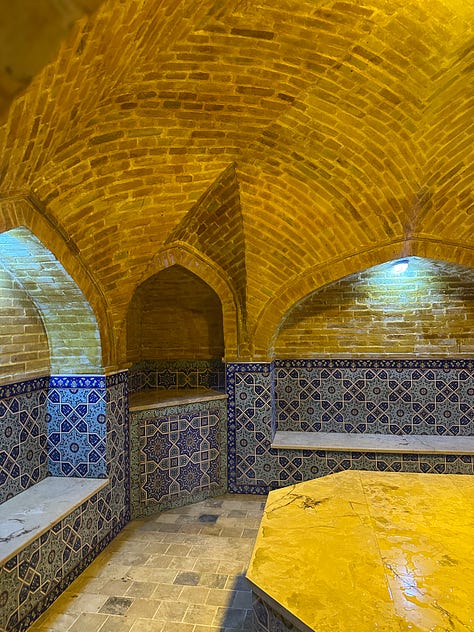
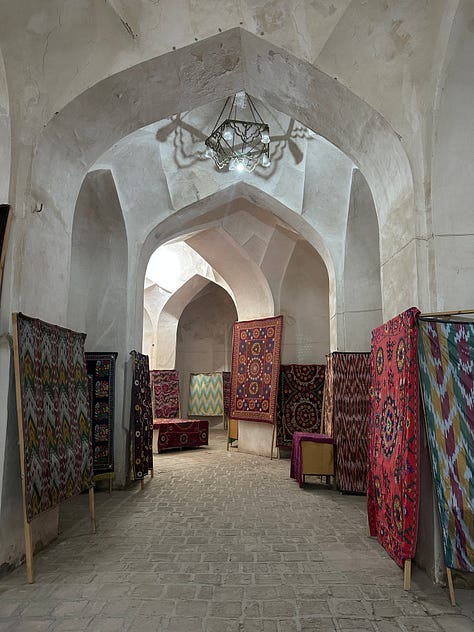

Taken in by the charm of Bukhara, our visit went a bit slower here. We spent half the morning doing a traditional hammam experience. I was turned off by descriptions I’d read about the operators using the centuries-old hammams, but when I stumbled across the Hammam Bathhouse Shahriston I was intrigued. Well-reviewed, it’s attached to one of the city’s nicer hotels. We went in for the traditional treatment, which involved stripping down and frying on a scalding hot stone slab before a nearly naked man scrapes you down, plops you on the ground, and proceeds to manhandle every inch of your naked body. I usually opt for massages I can fall asleep during, so having one where I almost asked for a strap to bite down on was quite the experience.
Bukhara is also where we probably ate the best. The name isn’t doing much for the cause, but the honey cake at Donuts & Coffee had us coming back each day. And Ayvan, housed in the former mansion of a Jewish merchant (Bukhara had a very large Jewish population), was the best restaurant we experienced not only in terms of ambiance and food (mostly foreign) but also service, in the whole country. We also finally had good plov, the most famous dish in Uzbekistan and a type of pilaf, at the unimaginatively named The Plov.
On our last day in Bukhara, I spent part of the morning refreshing the Uzbekistan Railways app, as we found out that tickets for the high-speed train to Samarkand often become available on the day of because of cancellations. Unfortunately, I lost out mid-booking on the two that popped up on one lucky refresh, so we stayed with our Sharq train tickets. (Sharq is the next newest model of train after the high-speed Afrosayib. It takes about 50 minutes longer to go to Samarkand with the Sharq train.) I’m kind of glad we did, as the premier class on Sharq is decked out in these massive leather massage chairs that recline into beds and I passed out for nearly the entire ride.
As the former capital of the bloodthirsty and prodigious Tamerlane (a.k.a. Timur), Samarkand is the titan of historical sights in Uzbekistan. Its Registan Square, where three gargantuan madrasas face each other on one plaza. Each is clad in a dazzling display of tilework, and inside each has an interior courtyard that will leave you dragging your jaw along the ground. Spiral fluted columns are glazed, the domes sparkle, each vault seems in competition with the previous, and Banna'i decorative brickwork is everywhere.
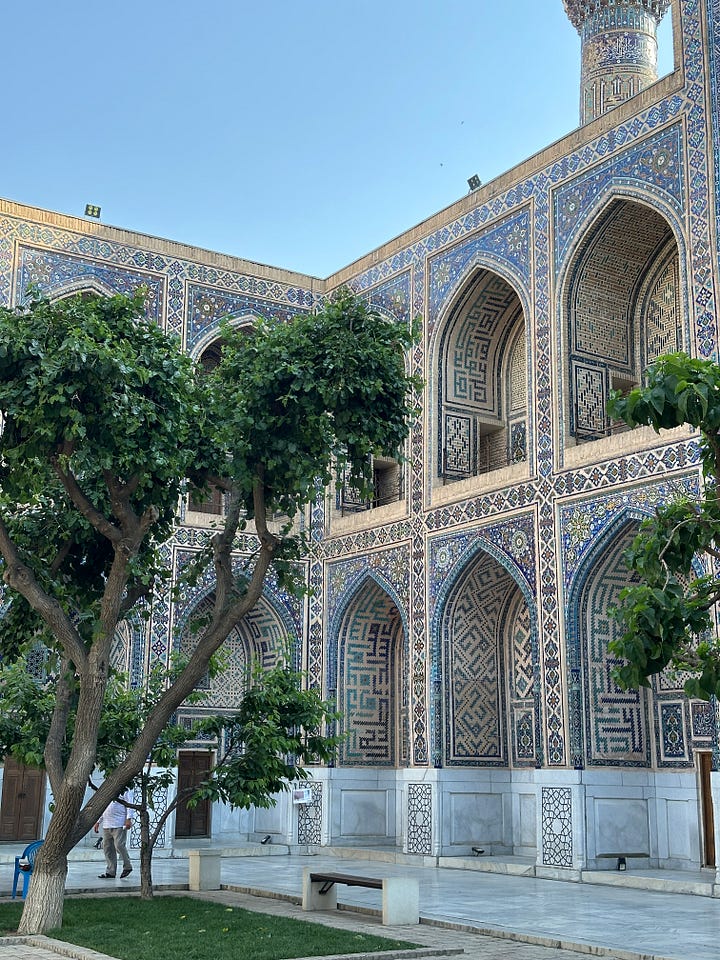
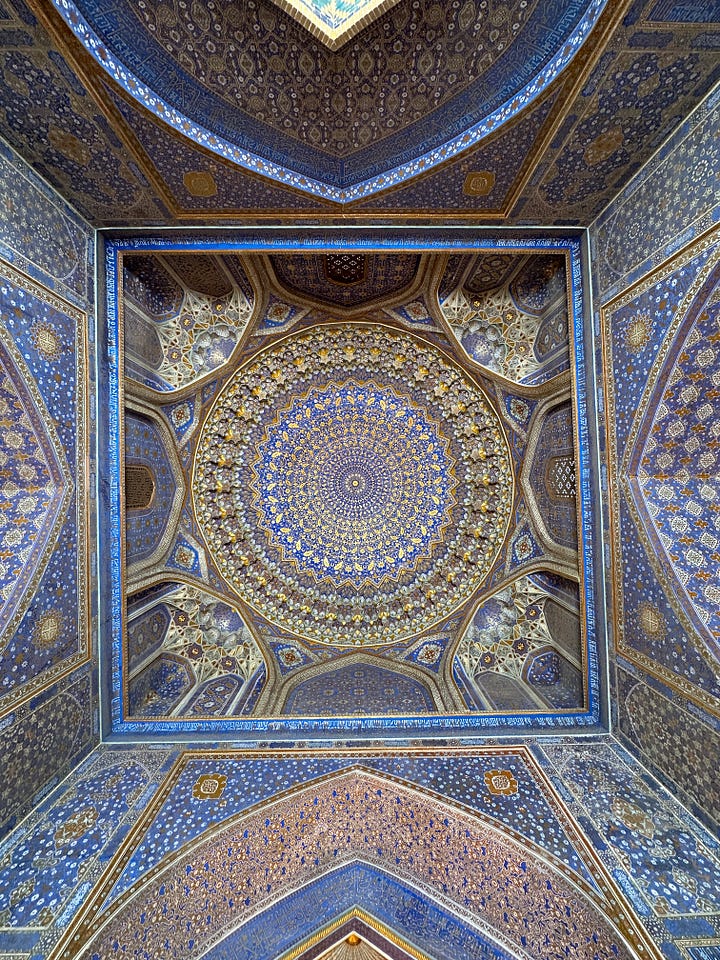
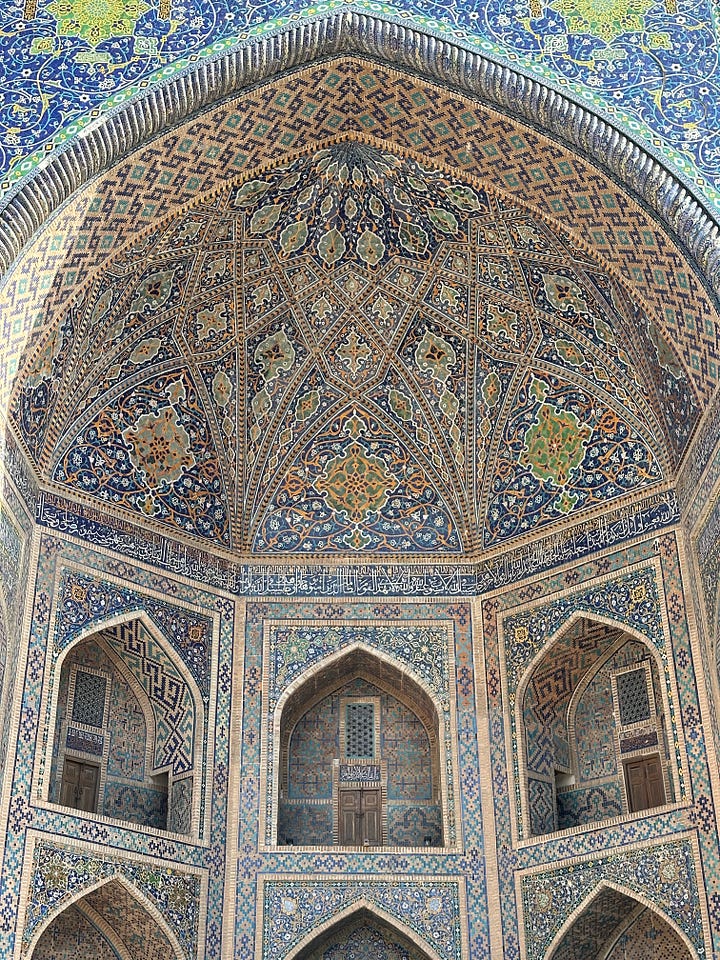

We were fast running out of steam, though, much like children who have been dragged to one too many duomos in Italy. Plus, we found little of the charm of Bukhara in Samarkand as a whole. A genuinely terrible meal at a restaurant everybody raved about—complete with a violinist playing Pirates of the Caribbean soundtrack next to us—added to our waning enthusiasm.
After taking in the Registan when it first opened, we scooted over to the Gur-e-Amir, the mausoleum holding the tomb of Tamerlane and his family. While the jade tomb of the mighty conqueror or the elaborately gilded ceiling are usually the stars, my favorite detail was the walls of white hexagonal onyx tile that appeared a shade of green and were trimmed by thin bands of black onyx.
The intense heat sent us back to the hotel to cool our heels, where we read our books, did some work, and relaxed in the property’s spa. By late afternoon we were ready to venture out for the last of the major sights—the towering Bibi-Khanym Mosque and the extraordinary Shah-i-Zinda.
I cannot emphasize enough how imperative it is to go early in the morning to Shah-i-Zinda. There are still crowds at sunset, and the way these monuments are lit at night is horrendous. Our flight from the very modern and cool Samarkand Airport was at 5:40 in the morning, so I got no second chance.
Too much of the world beckons for me to think I’ll get another chance to see it soon, though surely someday.
DEPARTMENT OF GRIEVANCES
Southwest announced the pricing of its new checked bag policy this week. While free for decades, now the first checked bag will cost $35 and the second $45. On the one hand, the move will surely create an ancillary revenue stream the struggling airline financially needs. On the other, it’s terrible timing as the already soft domestic travel market is likely to get more price-conscious if the economy continues to slow. What was once an environment in which Southwest would have thrived will be one in which it’s hard for a consumer to see any reason to stick with the airline. The news came at the same time as remarks given by its CEO at a conference were made public about looking at lounges and international routes. I don’t dispute that Southwest needed to make changes after years of making none, but it is utterly uninspiring that the changes seem to be “a facsimile of services you get from other major carriers at the same price.”
The biggest travel story of this week was probably the news that United, Delta, and American Airlines were all secretly discounting group travel on a number of routes. The news was initially uncovered by Kyle Potter at Thrifty Traveler, but it was strangely framed as the airlines gouging single and business travelers. (Gouging business travelers is the least newsworthy thing in the airline industry. It’s arguably the main way airlines make money.) Of course, outrage ensued, and as of writing this Delta and United have backtracked. But as Ben Schlappig at One Mile at a Time noted, they’ve backtracked not by cutting the fares of business and solo travelers, but just by getting rid of the discount for groups/families. It’s a strange example of the continued power of the pen, because if the initial story had been framed as “Ooooh look at this cool discount families can get” this would’ve been a very different story. The strangest part of all of this is that the airlines did this without telling anybody, and they still haven’t said why they did it.
I’m pretty excited about the United and JetBlue partnership, mainly because I don’t fly JetBlue enough to have any sort of loyalty to it. But there are a handful of times each year that I fly it that either a) were very few points so being able to use my United miles would’ve been great and b) having status would’ve been a boon. All of which will now be possible in the linking of their loyalty programs. (I selfishly don’t care much about United getting slots at JFK.)
What feels like an old-school Twitter discourse took place this week over a video of Suzy Weiss of The Free Press ranting about the effect Anthony Bourdain had on men and their foodie pursuits:
“Anthony Bourdain broke how a generation of men eat. The cult of personality he left in his wake is frankly insufferable,” she opines. “A lot of what we’re seeing in food culture, chef culture today has its roots in the type of eating and journalism Anthony Bourdain did. Bourdain treated ordering soup like a search and rescue mission, and now every man thinks they have to spelunk into some cave in order to get a bowl of pha and unless they do they’re not really having dinner. Everybody just needs to needs to calm down, take a step back, enjoy the slice of pizza or burger you’re eating. It’s not that deep.”
Now, some of this reads intentionally provocative, especially given how revered Anthony Bourdain is and that if anybody bothered to watch or read his oeuvre they’d see him championing the low-brow and low-key as much as the over-the-top stuff. I think people are also up in arms because The Free Press has annoyed large swathes of people since launching.
But to all those raging, I’d say that while she’s unfairly describing his work, a lot of what she’s actually talking about is how people have interpreted his work. It’s a bit like how the movie Wall Street, which any sane person would read as an indictment of that culture, actually INSPIRED countless men to go and work there. You can’t control how your art is interpreted, and I think a lot of that has happened to Bourdain. He’s not alive to tell these men to chill the fuck out, and I think right now he’d been one of the loudest voices working to restore sanity to food culture.
And speaking of Wall Street, I’d recommend Suzy Weiss read anything from the 1980s or even something that attempts to depict the era’s male culture like American Psycho, which is filled with men being insufferable and pompous about food in the exact ways she’s talking about.
I grew up on an island, so beach culture is a central part of my life. But I learned very quickly that New England beach culture is very different from the rest of the world. There are no vendors hawking goods yelling constantly as you try to relax, and while this has changed somewhat with the proliferation of smartphones, people didn’t blast music as they had the sense that not everybody shared their tastes. That certainly isn’t the case in a lot of the world, and definitely not in Brazil. And while I do love peace and quiet, there’s something sad about the government of Rio de Janeiro’s new decree that will ban unsanctioned food and drink sales, chair rentals, loudspeakers, and some of the live music at kiosks.
Having flown Turkish Airlines to and from Uzbekistan, I do think their new rule fining passengers who get out of their seat before the plane has stopped taxiing or get in the aisle before it’s their row’s turn to get off is necessary.
Many of the ills of late 20th-century life in American cities can be laid at the feet of I.M. Pei, the legendary architect and urban planner. While not entirely his fault, his ideas and those of his era wrecked Oklahoma City and countless other American metropolises in the 60s and 70s. One of his signature projects was the 16th Street Mall in Denver, which over the last decade or so has declined ever further into a sad punchline. But a multi-year $175 million renovation of the public amenity is about to be open to the public, so I’m curious to see how it looks and whether it can truly revitalize an area of the city few people I know would willingly visit.
It’s a thing everybody winks and nudges about but sort of just accepts, but it is absolutely an embarrassment at this point how bad Eurostar’s wifi is. Do not think you can ever get away with working remotely on the train.
It’s anecdotal, but it was remarkable how many of the conversations I had in Europe with people eventually came around to them not wanting to visit the U.S. because of how they might be treated at the border. Whether this perception is accurate or not (Austrian Airlines’ CEO said they’ve seen no change in the actual number of people turned away at the border), the sentiment is real and something the U.S. needs to do something about, Delta’s CEO Ed Bastian said in a wide-ranging interview with The Times.
As friends who have spent any significant amount of time with me can tell you, Patrick, this is not actually a pleasant thing to have…
I don’t care what else the hotel has done (and I don’t know how just having a smaller bed is more economical in and of itself) but a single-size bed is not luxury.
The paucity of items on display in major museums compared to the size of their collections is something that has long aggravated me (I once ran a column calling for collections like the Louvre and Met to be broken up and dispersed to museums nationwide), so I hope more museums do what the V&A in London has done with the V&A East Storehouse which just opened! Essentially it’s a giant hall where objects are simultaneously in storage and on display.
I’ve been very critical of the credulousness of the media in response to Airbnb’s rollout of the new experiences and services, so I just want to give Skift props for being appropriately skeptical.
Somehow missed that Wayfarer’s Chapel, the iconic glass and wood church designed by Lloyd Wright Jr. (Frank Lloyd Wright’s son) has been closed due to landslide risk with the intention of moving it. Now, a site a mile away from the current one overlooking the Pacific has been found next to city hall which looks like it’s also by the water so it could be an excellent solution.
Roughly 29% of Americans are planning to take on debt in order to travel this summer, and while I’m no Suze Orman, if this is you please reconsider. You’ll have way more fun when you’ve saved up and the end of your trip won’t be filled with stress about coming back to the bill-filled reality you’ve created.
I really loved this column on how we’re in another golden age of baseball and we don’t realize it. Baseball is such a beautiful part of the American fall and summer and can be a great way to experience a city.
TRAVEL INDUSTRY NEWS
France will ban smoking in most public places
Another ancient Mayan city has been unearthed in Guatemala, with pyramids and a canal system
United is moving the check-in cutoff time for domestic travelers to 45 minutes instead of 30
BILT has added Japan Airlines and Qatar Airways as two new airline partners
People in Santa Monica seem to hate the driverless Waymo taxis (I’m a Waymo skeptic)
Viator is open to partnering with Airbnb
Frida Kahlo’s family is opening a new museum in Mexico City on September 27
A court in Italy has overturned a law banning lockboxes for Airbnb and other short-term rentals
Hawaii is adding a daily environmental tourist tax




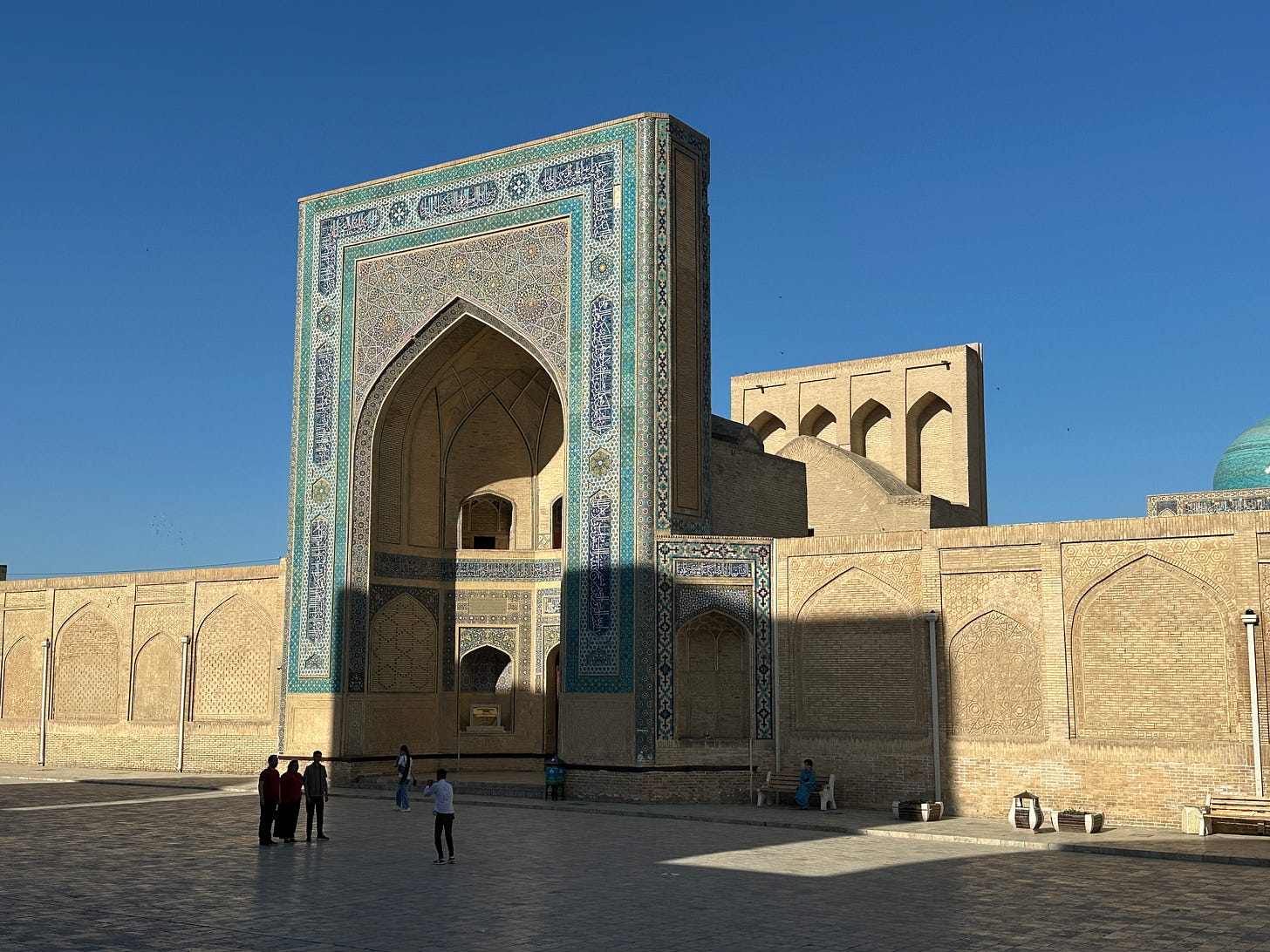

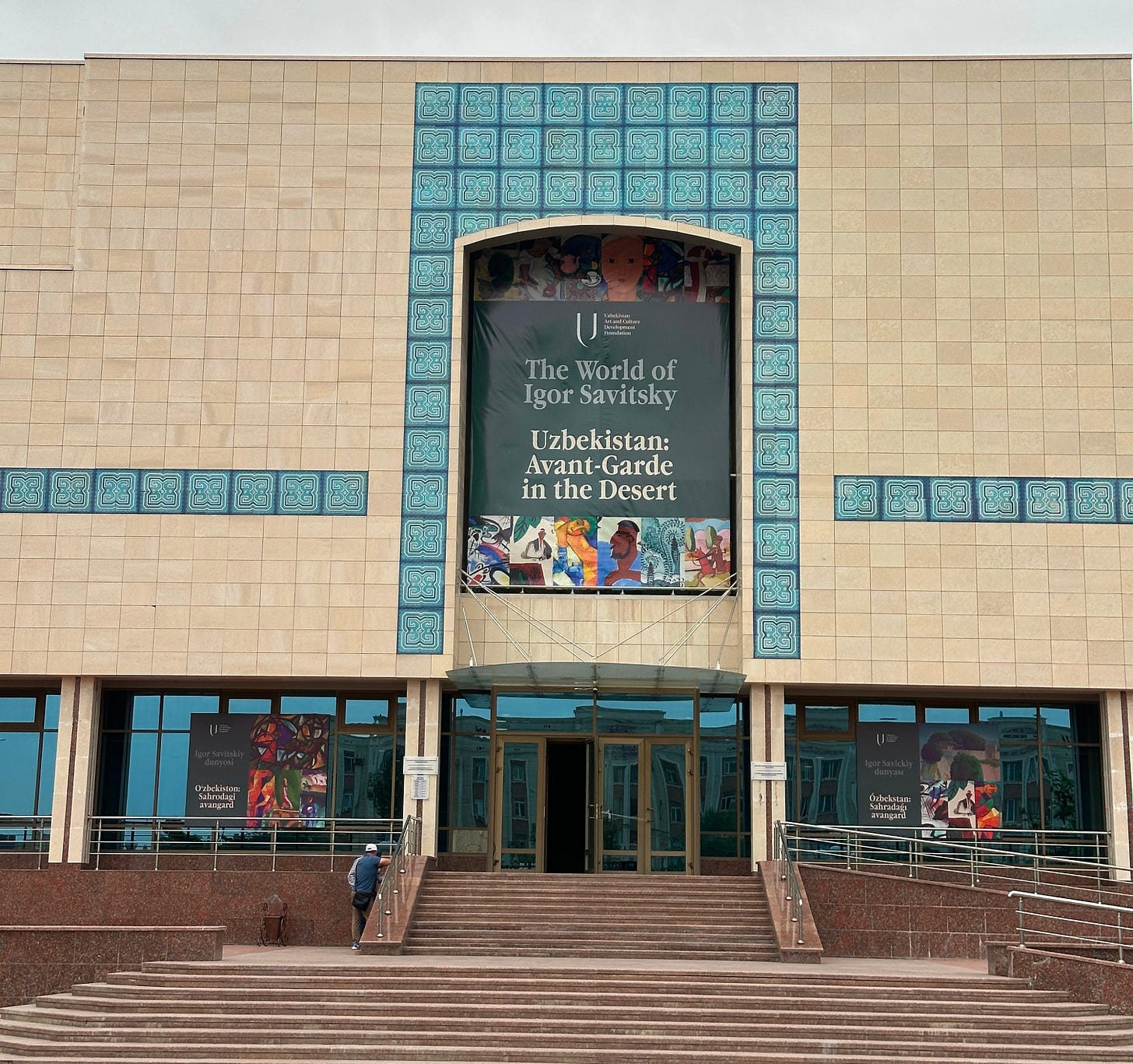


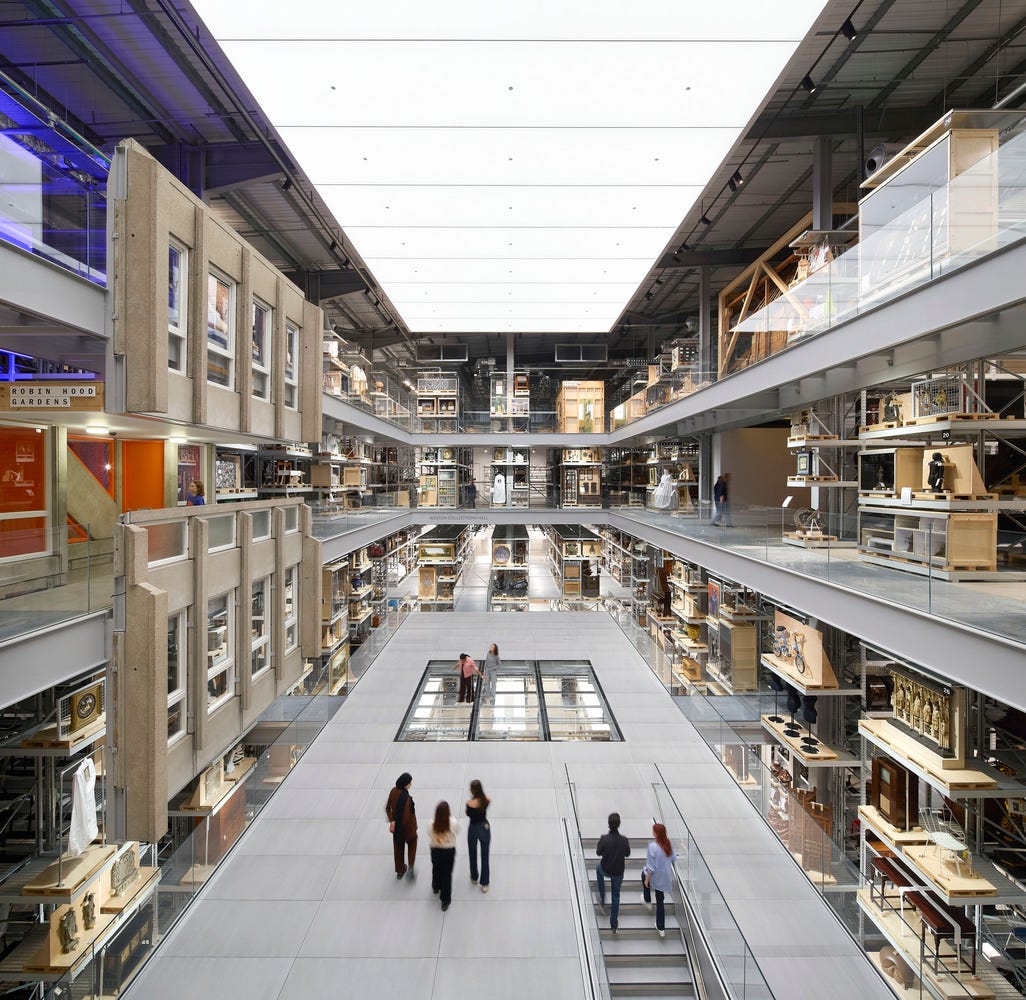

truly appreciate your review of Uzbekistan. It's been a place I've wanted to travel to for quite some time (I went to the Islamic Art Museum in Kuala Lumpur, and they have a miniature version of the Registan there). Do you do the whole thing solo or did you have a private guide? Really wouldn't want to do the whole tour group situation.